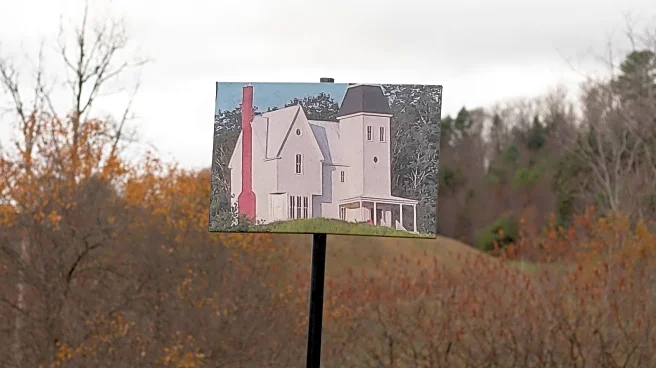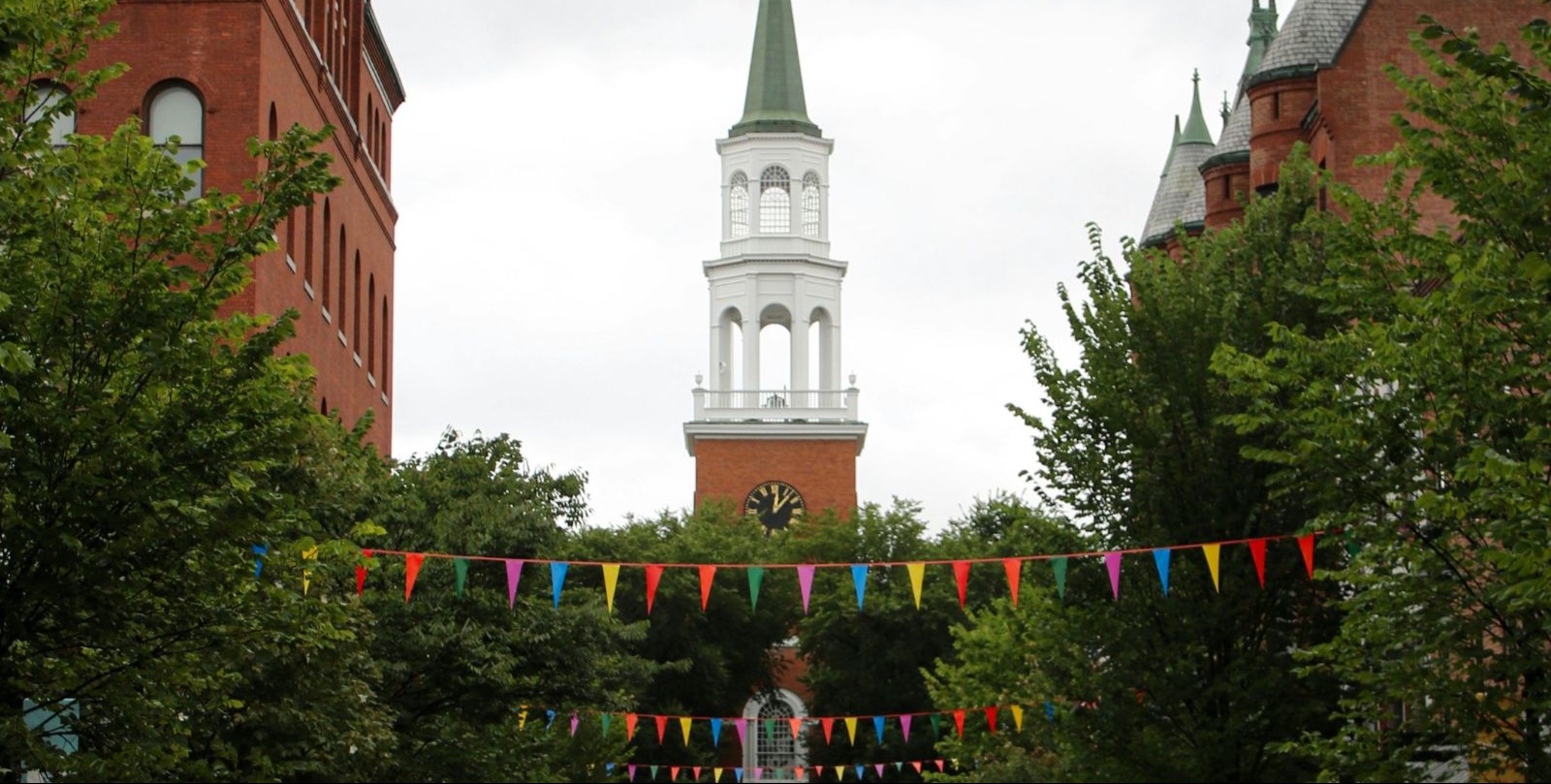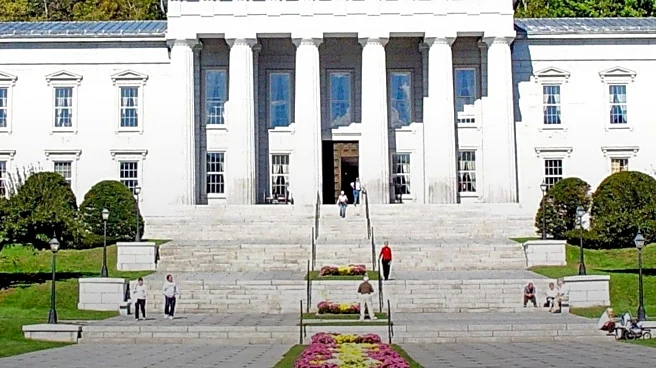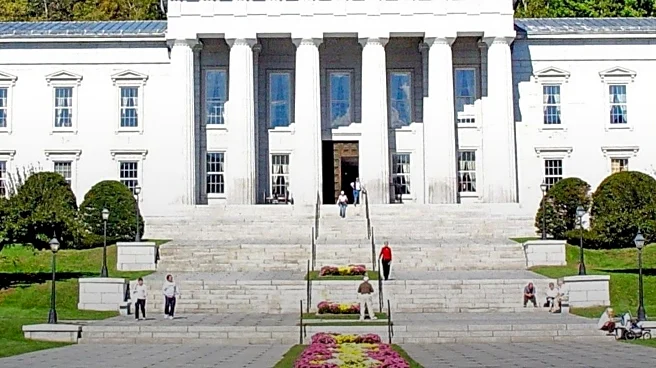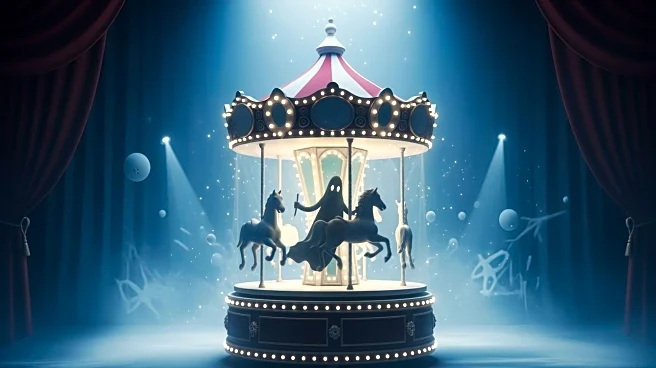What's Happening?
East Corinth, Vermont, has become a popular destination for fans of the 1988 film 'Beetlejuice,' directed by Tim Burton. The town, with a population of around 1,500, served as the filming location for many of the movie's iconic scenes, despite the film being
set in the fictional town of Winter River, Connecticut. Key locations include the 100-year-old building used as Miss Shannon's School for Girls and the red covered bridge where pivotal scenes were shot. The town has embraced its connection to the film, welcoming fans from around the world who are eager to see the sites where the movie was made. Local residents have created walking tours to guide visitors through the filming locations, enhancing the experience with signs featuring screenshots from the film.
Why It's Important?
The influx of 'Beetlejuice' fans has provided a boost to East Corinth's local economy, drawing tourists from across the globe. This phenomenon highlights the lasting impact of film on tourism and local communities, as fans seek to connect with the locations of their favorite movies. The town's embrace of its cinematic history has fostered a sense of community and pride among residents, who refer to visiting fans as 'juicers.' The continued interest in 'Beetlejuice,' especially with the filming of its sequel, underscores the cultural significance of the film and its ability to attract visitors decades after its release.
What's Next?
The schoolhouse building, a key filming location, has been sold to a 'Beetlejuice' enthusiast who plans to transform it into a community center, potentially serving as a museum and theater dedicated to the film. This development could further increase tourism and provide a dedicated space for fans to celebrate the movie. As interest in the film remains strong, East Corinth may continue to see a steady stream of visitors, contributing to the town's cultural and economic vitality.
Beyond the Headlines
The town's experience with 'Beetlejuice' tourism raises questions about the preservation of film locations and their impact on local communities. It also highlights the role of nostalgia in driving tourism, as fans seek to relive the experiences associated with their favorite films. The transformation of the schoolhouse into a community center could serve as a model for other towns looking to capitalize on their cinematic history.





